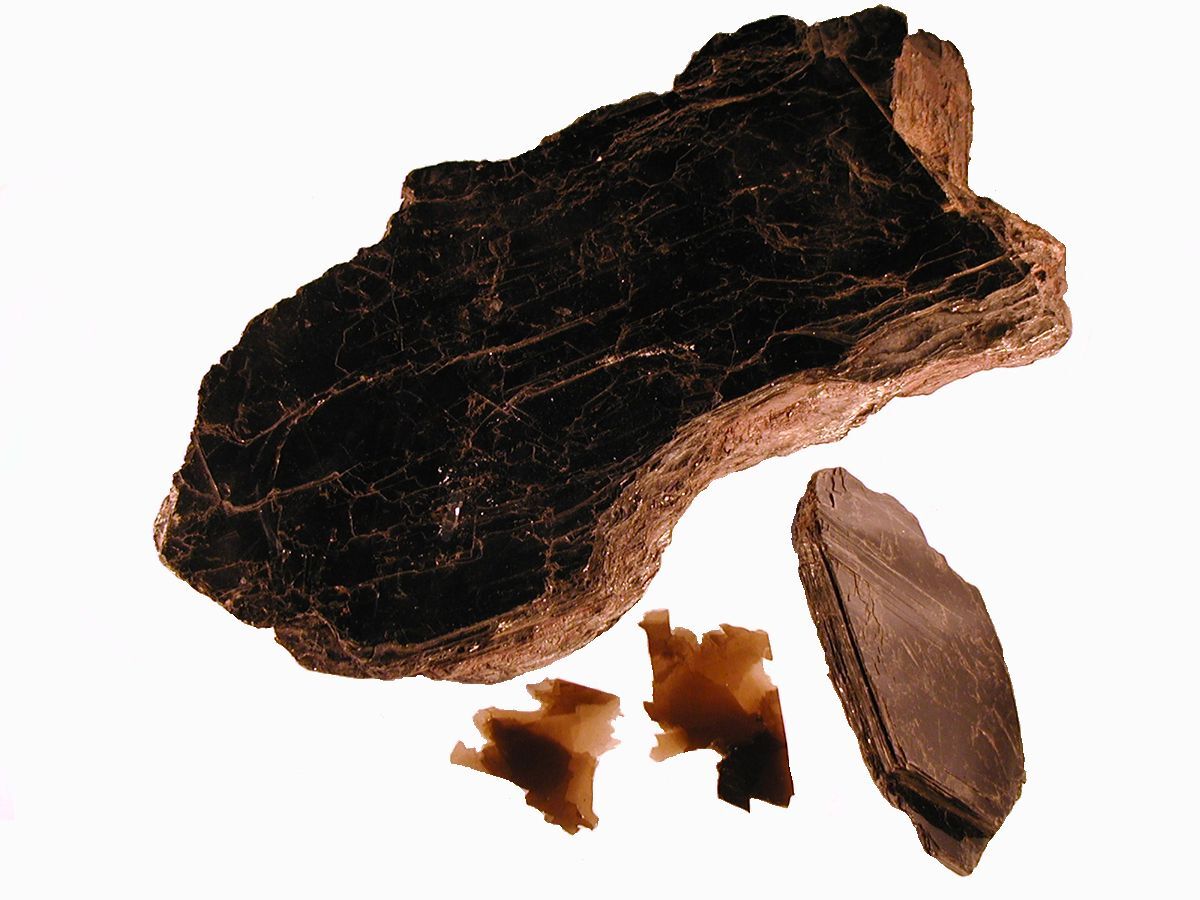
Biotite is a common mineral found in many types of rocks, but what makes it so special? This shiny, black or dark brown mineral is part of the mica group and is known for its flaky appearance. Biotite can be found in igneous, metamorphic, and sedimentary rocks, making it quite versatile. It's often used in geological studies to understand the history and conditions of rock formation. Did you know that biotite is also an excellent insulator? Its unique properties make it valuable in various industrial applications. Ready to learn more? Here are 50 fascinating facts about biotite that will rock your world!
Key Takeaways:
- Biotite, a dark and shiny mineral, is named after a French physicist. It forms in high-temperature environments and has various practical uses, from dating rocks to creating ceramics.
- Biotite, also known as "black mica," is found in rocks worldwide and has unique properties, such as being a good conductor of electricity. It can even be found in meteorites!
What is Biotite?
Biotite is a common mineral found in many types of rocks. It's part of the mica group and is known for its dark color and shiny appearance. Let's dive into some fascinating facts about biotite.
- Biotite is named after Jean-Baptiste Biot, a French physicist who studied the optical properties of mica minerals.
- This mineral is typically black, dark brown, or dark green.
- Biotite has a sheet-like structure, which allows it to be split into thin, flexible sheets.
- It is commonly found in igneous and metamorphic rocks.
- Biotite is a silicate mineral, meaning it contains silicon and oxygen.
- It has a hardness of 2.5 to 3 on the Mohs scale, making it relatively soft.
- Biotite can be found in granite, gneiss, and schist.
- It often forms in high-temperature environments.
- Biotite is a good conductor of electricity.
- It can be used to determine the age of rocks through radiometric dating.
Chemical Composition and Properties
Biotite's chemical composition and properties make it unique among minerals. Here are some key points about its makeup and characteristics.
- Biotite's chemical formula is K(Mg,Fe)3(AlSi3O10)(F,OH)2.
- It contains potassium, magnesium, iron, aluminum, silicon, fluorine, and hydroxyl.
- The presence of iron gives biotite its dark color.
- Biotite is part of the phyllosilicate group, which means it has a layered structure.
- It has perfect cleavage in one direction, allowing it to split easily.
- Biotite has a vitreous to pearly luster.
- It has a specific gravity of 2.7 to 3.3.
- Biotite can be transparent to opaque.
- It is often associated with other minerals like quartz and feldspar.
- Biotite can alter to chlorite and vermiculite through weathering.
Formation and Occurrence
Biotite forms under specific conditions and can be found in various geological settings. Let's explore where and how it forms.
- Biotite forms in high-temperature environments, such as those found deep within the Earth's crust.
- It crystallizes from magma during the cooling process.
- Biotite can also form during the metamorphism of existing rocks.
- It is commonly found in pegmatites, which are coarse-grained igneous rocks.
- Biotite is often present in contact metamorphic rocks.
- It can be found in hydrothermal veins.
- Biotite is widespread in continental crust rocks.
- It is less common in oceanic crust rocks.
- Large biotite crystals can be found in some granitic pegmatites.
- Biotite is often associated with other mica minerals like muscovite.
Uses and Applications
Biotite has several practical uses and applications, both in scientific research and industry. Here are some ways biotite is utilized.
- Biotite is used in radiometric dating to determine the age of rocks.
- It helps geologists understand the history of geological formations.
- Biotite can be used as an insulating material due to its electrical properties.
- It is sometimes used in the production of ceramics.
- Biotite can be ground into a powder and used as a filler in paints and plastics.
- It is used in the study of metamorphic rock processes.
- Biotite's presence can indicate the temperature and pressure conditions of rock formation.
- It is used in petrology to classify and identify rock types.
- Biotite can be used in the study of mineralogical and geochemical processes.
- It is sometimes used in decorative stone and building materials.
Interesting Facts and Trivia
Biotite has some intriguing aspects that make it a subject of interest beyond its scientific properties. Here are some fun facts and trivia about biotite.
- Biotite is sometimes called "black mica" due to its color.
- It can be found on every continent.
- Biotite's sheets can be so thin that they are transparent.
- It is often mistaken for other dark minerals like hornblende.
- Biotite can be used to create thin sections for microscopic study.
- It has been found in meteorites, indicating its presence in space.
- Biotite can be used to study the thermal history of rocks.
- It is sometimes used in metaphysical practices for grounding and protection.
- Biotite can be found in some sandstones and sedimentary rocks.
- The largest biotite crystals can be several centimeters across.
The Final Word on Biotite
Biotite, a common mineral in many rocks, holds a treasure trove of information about Earth's history. Found in igneous and metamorphic rocks, it helps geologists understand geological processes. Its dark color and shiny appearance make it easy to spot in rock samples. Biotite's ability to withstand high temperatures and pressures makes it valuable in studying Earth's crust and mantle.
This mineral also plays a role in soil formation, contributing to nutrient cycles. Its presence in various rock types, from granite to schist, shows its versatility. Biotite's unique properties, like its perfect cleavage and high iron content, make it a subject of interest for both scientists and hobbyists.
Understanding biotite not only enriches our knowledge of geology but also deepens our appreciation for the complex processes shaping our planet. Keep exploring, and you'll uncover even more fascinating facts about this remarkable mineral.
Frequently Asked Questions
Was this page helpful?
Our commitment to delivering trustworthy and engaging content is at the heart of what we do. Each fact on our site is contributed by real users like you, bringing a wealth of diverse insights and information. To ensure the highest standards of accuracy and reliability, our dedicated editors meticulously review each submission. This process guarantees that the facts we share are not only fascinating but also credible. Trust in our commitment to quality and authenticity as you explore and learn with us.


